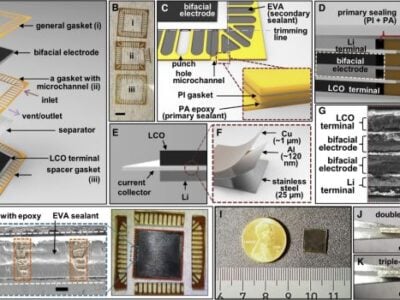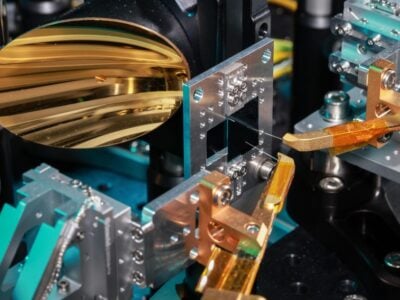NASA commissions 14 experimental space technology concepts … – eeNews Europe

Technology News |
By Nick Flaherty
US space agency has commissioned 14 projects with experimental space technologies from news sensors and instruments and manufacturing techniques for habitats on Mars to power systems.
The NASA Innovative Advanced Concepts (NIAC) program fosters innovation by funding early-stage studies to evaluate technologies that could support future missions. The latest round of awards will provide $175,000 grants to 14 researchers. Ten of the selected researchers are first-time NIAC recipients.
“NASA dares to make the impossible possible. That’s only achievable because of the innovators, thinkers, and doers who are helping us imagine and prepare for the future of space exploration,” said NASA Administrator Bill Nelson. “The NIAC program helps give these forward-thinking scientists and engineers the tools and support they need to spur technology that will enable future NASA missions.”
A concept envisioned by Quinn Morley of Planet Enterprises in Gig Harbor, Washington, could investigate the chemistry of Saturn’s largest moon, Titan.
A low-cost flying boat (shown above) in Titan’s low gravity could serve as a relocatable lake lander with an airborne duty cycle target of around 25%, enabling daily hour-order flights. The project is looking at an integrated, fluidics approach to aerial atmospheric science where condensation of methane and suspended complex organics can potentially be ingested through a porous or permeable aircraft leading edge, and coalesced via a passive capillary.
An experiment to demonstrate this system at a small scale in microgravity is in preliminary design stages.
Mary Knapp from the Massachusetts Institute of Technology (MIT) in Cambridge proposed a new kind of space observatory comprised of thousands of identical small satellites. Precisely positioned in deep space, they could work together to detect radio emissions at low frequencies from the earliest epochs of the universe and measure magnetic fields of terrestrial exoplanets, helping identify planets outside the solar system that are rocky like Earth and Mars.
CubeSat power
Stephen Polly with the Radioisotope Thermoradiative Cell Power Generator project will demonstrate the feasibility of a revolutionary power source for missions to the outer planets using a thermoradiative cell (TRC).
This uses a radioisotope heat source with a mass specific power of 30 W/kg and a three orders of magnitude decrease in volume down to 0.2 litres as compared to a conventional multi-mission radioisotope thermal generator (MMRTG).
This technology would allow a proliferation of small versatile spacecraft with power requirements not met by photovoltaic arrays or bulky MMRTG systems. This will directly enable small-sat missions to the outer planets as well as operations in permanent shadow such as polar lunar craters.
The study will investigate the thermodynamics and feasibility of the development of a radioisotope enabled thermoradiative power source focusing on system size, weight, power (SWaP) as well as materials growth of identified materials including InAsSb or InPSb by metalorganic vapor phase epitaxy. This could be used to power a cubesat (or fleet of cubesats) that can ride along with a Flagship Uranus mission, doing such tasks as serving as information relay for atmospheric probes, and getting a parallax view of the planet and moons.
The NIAC programme sits within NASA’s Space Technology Mission Directorate (STMD) and explores technically credible, early-stage aerospace concepts.
“These initial Phase I NIAC studies help NASA determine whether these futuristic ideas could set the stage for future space exploration capabilities and enable amazing new missions,” said Michael LaPointe, programme executive for NIAC at NASA Headquarters.










